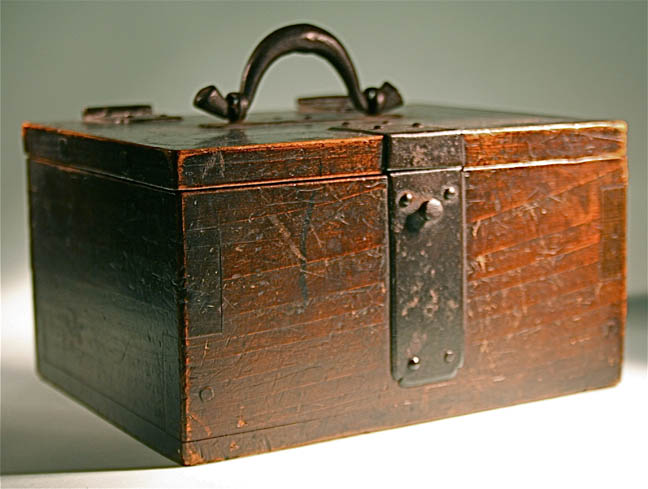

Title: Rare Antique Handmade Japanese Wooden Box
Shipping: $39.00
Artist: N/A
Period: 19th Century
History: N/A
Origin: Central Asia > Japan
Condition: Museum Quality
Item Date: 1800 to 1900
Item ID: 2243
Late 18th/early 19th Century (cash security box), made of hard wood and wrapped in heavy handmade iron bands and hardware held with rounded rivets. Each end of the box is fitted with a sturdy handmade handle and the lid is secured with a little button opener. Such examples in original condition are rare. This particular one was purchased in Japan years ago.
Link: http://en.wikipedia.org/wiki/Woodworking
Woodworking is the process of building, making or carving something using wood.
Along with stone, mud, and animal parts, wood was certainly one of the first materials worked by primitive human beings. Microwear analysis of the Mousterian stone tools used by the Neanderthals show that many were used to work wood. The development of civilization was closely tied to the development of increasingly greater degrees of skill in working these materials. Carved wooden vessels are known, for example, from the Linear Pottery culture wells at Kückhofen and Eythra. Examples of Bronze Age wood-carving include tree trunks worked into coffins from northern Germany and Denmarkand wooden folding-chairs. The site of Fellbach-Schmieden in Germany has provided fine examples of wooden animal statues from the Iron Age. Wooden idols from the La Tène period are known from a sanctuary at the source of the Seine in France. Two ancient civilizations that used woodworking were the Egyptians and the Chinese. Woodworking is depicted in many ancient Egyptian drawings, and a considerable amount of ancient Egyptian furniture (such as stools, chairs, tables, beds, chests) has been preserved in tombs. As well, the inner coffins found in the tombs were also made of wood. The metal used by the Egyptians for woodworking tools was originally copper and eventually, after 2000 BC bronze as ironworking was unknown until much later.[1] Commonly used woodworking tools included axes, adzes, chisels, pull saws, and bow drills. Mortise and tenon joints are attested from the earliest Predynastic period. These joints were strengthened using pegs, dowels and leather or cord lashings. Animal glue came to be used only in the New Kingdom period.[2] Ancient Egyptians invented the art of veneering and used varnishes for finishing, though the composition of these varnishes is unknown. Although different native acacias were used, as was the wood from the local sycamore and tamarisk trees, deforestation in the Nile valley resulted in the need for the importation of wood, notably cedar, but also Aleppo pine, boxwood and oak, starting from the Second Dynasty.